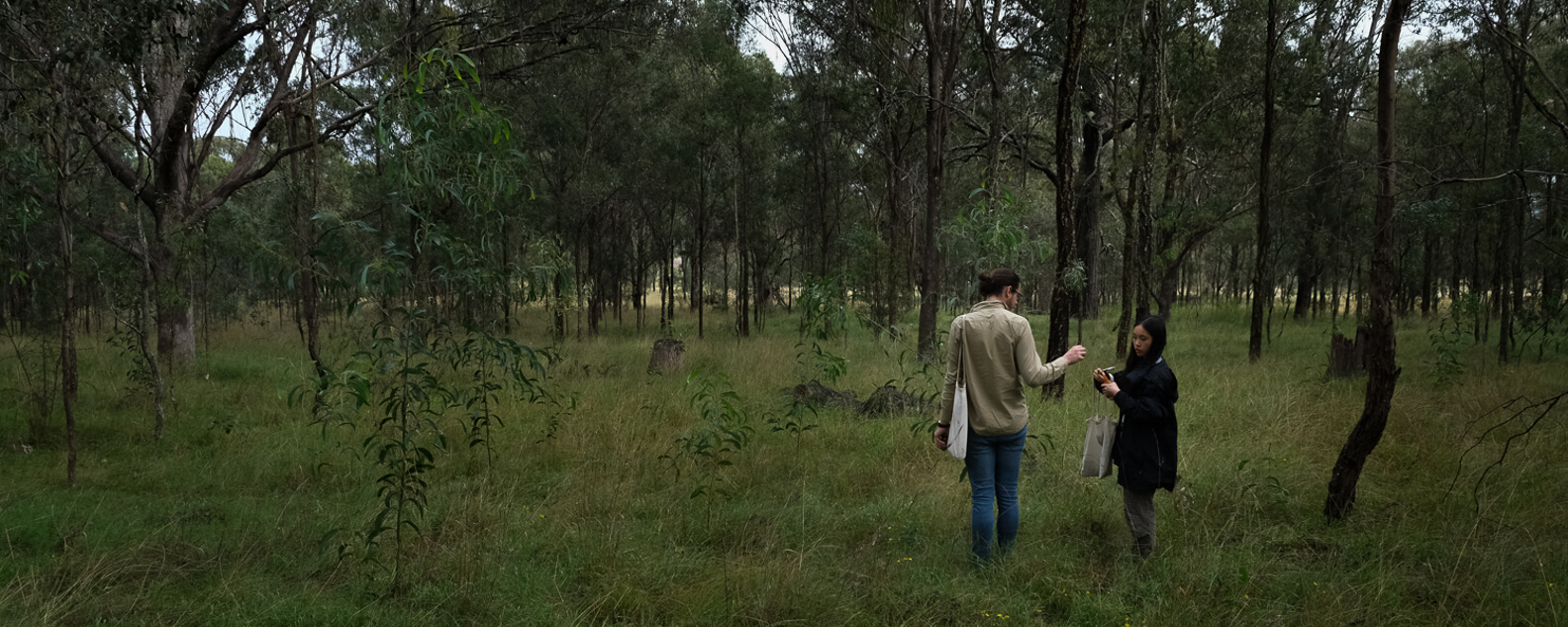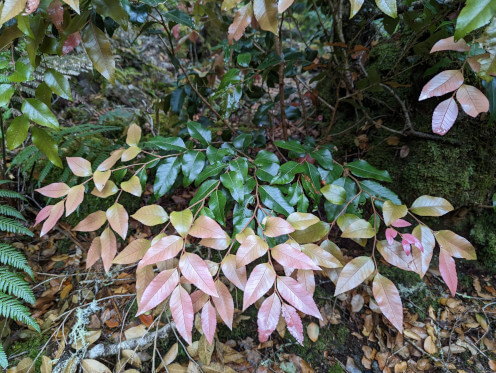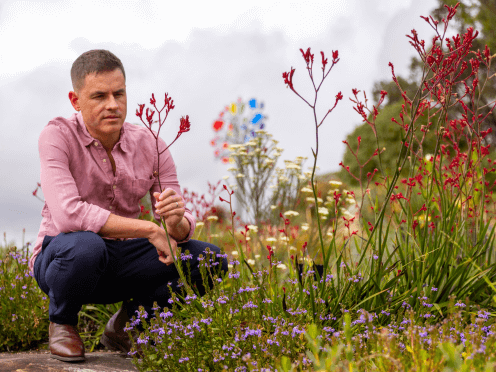Sharing genomic information with restoration practitioners
Discover how restoration practitioners can use the Restore and Renew web tools to consider genetic information and climate change when sourcing material for restoration.

This is part two of a three-part series on using conservation genomics to help restore threatened ecological communities. In part one, we described why genetics is relevant to ecological restoration.
The Restore and Renew project responds to the need for ecological restoration practitioners to incorporate the latest science into their toolkit, helping them to restore diverse, resilient and adaptable ecosystems. Resilient ecosystems need to be made up of species that are not only adapted to the local geology, climate and soil, but to future conditions as well. Restore and Renew acquires empirical knowledge on genetic diversity, habitat availability (current and future) and distributional patterns across multiple species to deliver restoration guidance to practitioners in easy to use publicly available web tools.
Below, we outline how restoration practitioners can use the Restore and Renew web tools to consider genetic information and climate change when sourcing material for restoration.
Key points
- Restoration practitioners can use the Restore and Renew webtools to consider genetic information and climate change when sourcing material for ecological restoration projects and the establishment of seed production areas.
- A Site Matching Tool enables environmental matching of restoration sites to potential seed collection areas taking into account future climate change impacts. The tool can guide collection of seed that may be future-adapted and climate-ready.
- Practitioners can use the Restore and Renew Webtool to identify genetic provenance boundaries to guide collection of local provenance material.
- The Restore and Renew Webtool can help avoid unnecessarily restrictive seed collection due to underestimation of genetic provenance area.
Why was Restore and Renew developed?
Restoration practitioners increasingly appreciate the importance of considering genetic information and climate change when sourcing material for restoration. Fail to adequately address the risks of low genetic diversity and changes in habitat availability due to climate change, and you may end up with restored populations that are unable to adapt to change and exhibit low or no recruitment.
Despite increasing awareness of the importance of considering genetic and long-term environmental information when acquiring material for restoration, it isn’t easy for practitioners to access genomic and climatic data. The Restore and Renew Project is changing that.
The publicly available, practitioner-friendly Restore and Renew website delivers genomic and environmental information through two tools: a Site Matching Tool, and the Restore and Renew Webtool.
Restoration practitioners can use the Restore and Renew webtools to consider genetic information and climate change when sourcing material for ecological restoration and establishment of seed production areas.
The Site Matching Tool – what it delivers and how to use it
The Restore and Renew Site Matching Tool enables environmental matching of restoration sites to potential seed collection areas taking into account future climate change impacts.
Temperature, precipitation, aspect and topographic wetness index are included in the model, along with moderate and severe Future Climate Scenarios and two timeframes (2050 or 2070).
Practitioners identify the location of their restoration site and can see the location of sites that (i) currently match the target site and (ii) will match in the future under the two severity and time options. This information can be used to identify collection areas for material that may be future-adapted and climate-ready.
The Restore and Renew Site Matching Tool can guide collection of future-adapted and climate-ready seed by matching restoration sites to potential seed collection areas taking into account climate change.
A demonstration of how to use the Restore and Renew Site Matching Tool to match restoration sites to potential seed collection areas taking into account future climate change impacts.
The Restore and Renew Webtool – what it delivers & how to use it
The Restore and Renew Webtool is a decision support tool for genetically informed species restoration.
Using Next-generation sequencing (NGS), a technique similar to that used in the ‘Human genome project’, we are collecting genetic information on a vast scale. Over the past ten years, we have collected tens of thousands of samples from more than 125 (and growing) native species commonly used in restoration across NSW.
Practitioners specify a location where they wish to restore and select from a list of species that may be suitable for the site. For each species they can view and download a map of the current distribution of the selected species (herbarium records), recommended collection area (local genetic provenance boundary), a map of current similar environments, and a map of modelled future (2050) similar environments. This information can guide the collection of genetically appropriate climate-ready material for ecological restoration projects and seed production areas.
Practitioners can use the Restore and Renew Webtool to identify genetic provenance boundaries to guide collection of local provenance material.
Demonstration of how to use the Restore and Renew Webtool to identify genetic provenance boundaries to guide the collection of local provenance climate-ready material.
Avoiding unnecessarily restrictive seed collection
The Restore and Renew Webtool provides an opportunity to increase the availability of local provenance source material for restoration.
Defining provenance boundaries in the absence of genetic information is challenging. Generalisations have their limitations, with local provenance ranging from sampling within a few hundred meters to across a bioregion.
Underestimating provenance size may unnecessarily reduce options for seed sourcing. By clearly defining provenance boundaries, the Restore and Renew Webtool allows practitioners to use genetic data rather than generalisations and may increase the area where local provenance seed may be sourced.
The Restore and Renew Webtool can help avoid unnecessarily restrictive seed collection due to underestimation of genetic provenance area.
Species selection
To ensure Restore and Renew provides useful outcomes, restoration practitioners, nurseries and ecologists were consulted in the initial stages of project development to ensure species included were those most commonly used in restoration and revegetation projects across NSW.
An online survey targeting anyone involved in native vegetation restoration projects in NSW was conducted in 2013. Survey respondents were provided with a summary of the type of information the Restore and Renew project would provide and asked how useful they thought this information would be. 86.4% of survey respondents claimed the information would be ‘extremely useful’, ‘very useful’ or ‘useful’.
A total of 730 species were identified as ‘commonly used’ by 147 respondents. Following the online survey, an expert workshop was held in March 2014 to refine the list of species. After a critical review, a final group of 232 species were selected. The refinement of the list took into account frequency of use, as well as the need to capture sufficient geographic, environmental and functional diversity.
The future of Restore and Renew includes additional species and updates to incorporate additional guidance regarding restoration options.
The future of Restore and Renew
Restore and renew is a long-term project that has already been running for more than five years. The project will continue to grow with the inclusion of additional species and updates to incorporate additional guidance regarding restoration options.
Relevant research publication: Rossetto et al. (2018) Restore and Renew: a genomics-era framework for species provenance delimitation, Restoration Ecology. 27 (3)
Read part three
In the third part of this series, we explore how the Restore and Renew webtools can help guide the restoration of threatened ecological communities.
Related stories

For the team at the Research Centre for Ecosystem Resilience (ReCER), a request from the Blue Mountains Botanic Garden to design a hedge of the towering Nothofagus moorei, or Antarctic beech, sparked a unique collaboration between science and horticulture.
In the lower Hunter Valley, a new nature reserve named Tiraki – Wonnarua for ironbark – has become a sanctuary for one of Australia’s rarest plants.

In this new episode of What the Flora!? discover why this world-first global ‘Tree of Life’ study is a new milestone in understanding the evolutionary history of flowering plants.